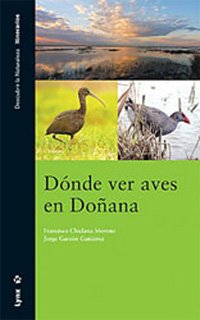It's been an odd (ie. peculiar) week and I didn't even get anything written about the Guadalhorce last Sunday, so here goes.
Last week I had a good bellyache about the lack of raptors at Tarifa-La Janda on Saturday, and it didn't help me to hear later that the same day I should have been in the Algarrobo-Gib. area where they recorded 26.000 (more or less)
Honey Buzzards moving southwards - honest, that figure is correct. You win some, you lose some.
Last Sunday, 31 August at the Guadalhorce there was the usual selection of waders, the outstandingly plumaged
Grey Plover was still present, as were a few
Curlew Sands and one or two others. As often walk my dog down by the river in late afternoon, I have been able to watch 4-5 juv.
Little Terns that have been present every afternoon and Friday there were at least 24
Black Terns present also.
And after the erythristic Little Ringed Plovers, a
leucistic Barn Swallow was feeding over the river on Friday afternoon. Andrés Serrano and myself saw one close by many years ago, an interesting basically mid beige colour with darker throat and white underparts, and I do know the difference between a Barn Swallow and a Sand Martin, of which there have also been a few this week.
This morning, Sunday, 7 September, at the Guadalhorce there were very few waders, incredibly few considering but there was large-scale compensation as we had a nice straggling flock of at least
600-700 Honey Buzzards move across E-W with at least
7 Black Kites and a single
Booted Eagle.
At about 10.10 I rang Blas and Paco at the Mirador del Aguila to the NW of Fuengirola (it's in the new book) to warn them and the first ones appeared there about 40 minutes later. Updates on this movement by Blas gave that they had censused
c.
700 Honey Buzzards moving W by 11.25 and no less than
c.
2.000 had flown W by 1315! That's what I calla big movement. They are turning up some good raptors there and it's a site that's well worth a visit if you are in the area.
I later checked with Bob Wright who lives near the Viñuela Reservoir, more or less NE inland from Málaga and he had seen no Honey Buzzards this morning, although he had seen the first 6
Griffon Vultures moving W late yesterday. These are late migrants which will continue moving W into November, with the biggest movements in the second half of October.
It's just as well the raptors appeared today at the Guadalhorce because there was very little else to watch and it was some compensation for last Saturday's cop-out in the Strait. We have never seen so many raptors before at the ponds as they overfly between the sierras to the east and behind Málaga to those west of the airfield. I bet the control tower was watching them carefully as they overflew the airfield and there was a marked lack of air traffic.
My friend Teo, a great photographer, has put together a bundle of his photos of the Black Storks that have wintered in the province these can be seen at his blog at
www.surfbirds.com/blog/andalucianatureI shall be away with the wife on Madeira for a week as of this coming Wednesday, 10 September, until 17 September, so there will be no postings for about two weeks. I hope to see some good seabirds, especially the Fea's and Zino's Petrels as we have two day trips booked to the Desertas Islands from Funchal.





